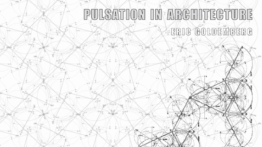Professors Pablo Lorenzo-Eiroa and Michael Young Contribute Essays to PULSATION IN ARCHITECTURE
POSTED ON: April 12, 2012

PULSATION IN ARCHITECTURE by Eric Goldemberg
"Pulsation in Architecture highlights the role of digital design as the catalyst for a new spatial sensibility related to rhythmic perception. It proposes a novel critical reception of computational architecture based on the ability of digital design to move beyond mere instrumentality, and to engage with core aspects of the discipline: the generative engine of digital architecture reinvigorates a discourse of part-to-whole relationships through the lens of rhythmic affect. There is a paradigm shift in spatial perception due to the intense use of computational techniques and the capacity to morph massive amounts of data in spatial patterns; rhythm plays a pivotal role in the articulation of the topology of buildings, generating the atmospheric character that induces moods and throbbing sensations in space. Pulsation introduces the fundamental animate capacity of living form and reshapes our perception of architectural space across the multiple scales of a project, from digital inception to fabrication.
An emerging thread of rhythmic sensibility loosely binds a survey of contemporary design practices, including contributions by Peter Eisenman, Jeff Kipnis, Greg Lynn, UNStudio, Preston Scott Cohen, Reiser + Umemoto (Jesse Reiser, AR '81; Nanako Umemoto, AR '83), Asymptote, Ali Rahim, Hernan Diaz Alonso, Ruy Klein, Gage / Clemenceau, NOX, Evan Douglis Studio (Evan Douglis, AR '83), kokkugia, and MONAD Studio." read more ...
Contributing authors include: Pablo Lorenzo-Eiroa, Carlo Rainaldi’s Post-Historical Suspension: Anticipating Cartopological Space and Michael Young, The Limits of Control




